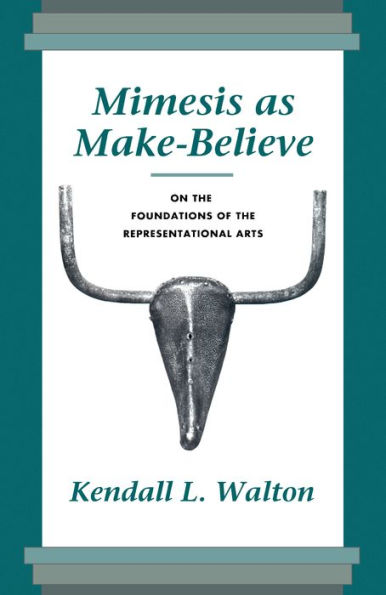Table of Contents
Acknowledgments
Introduction
PART 1: REPRESENTATIONS
1. Representation and Make-Believe
1. Imagining
2. Prompters
3. Objects of Imaginings
4. Imagining about Oneself
5. Props and Fictional Truths
6. Fictionality without Props: Dreams and Daydreams
7. Representations
8. Nonfigurative Art
9. Fictional Worlds
10. The Magic of Make-Believe
2. Fiction and Nonfiction
1. Nonfiction
2. Fiction versus Reality
3. Linguistic Strategies
4. Fiction and Assertion
5. Pretended and Represented Illocutionary Actions
6. Fiction Making as an Illocutionary Action?
7. Mixtures, Intermediates, Ambiguity, Indeterminacy
8. Legends and Myths
9. A Note on Truth and Reality
10. Two Kinds of Symbols?
3. Objects of Representation
1. What Objects Are
2. Representation and Matching
3. Determinants
4. Representing and Referring
5. Uses of Objects
6. Reflexive Representation
7. The Inessentiality of Objects
8. Nonactual Objects?
4. The Mechanics of Generation
1. Principles of Generation
2. Direct and Indirect Generation
3. Principles of Implication
4. The Mechanics of Direct Generation
5. Silly Questions
6. Consequences
PART 2: APPRECIATING REPRESENTATIONS
5. Puzzles and Problems
1. Rescuing Heroines
2. Fearing Fictions
3. Fictionality and Other Intentional Properties
6. Participation
1. Participation in Children's Games
2. Appreciators as Participants
3. Verbal Participation
4. Restrictions on Participation
5. Asides to the Audience
6. Seeing the Unseen
7. Psychological Participation
1. Fearing Fictionally
2. Participating Psychologically
3. Paradoxes of Tragedy
4. Suspense and Surprise
5. The Point of Participation
6. Appreciation without Participation
PART 3: MODES AND MANNERS
8. Depictive Representation
1. Depiction Defined
2. Looking at Pictures and Looking at Things
3. Styles of Depiction
4. Realism
5. Cross-Modal Depiction
6. Musical Depictions
7. Points of View (in Depictions)
8. Conclusion
9. Verbal Representations
1. Verbal Depiction
2. Narration
3. Two Kinds of Reliability
4. Nonverbal Narration
5. Absent and Effaced Narrators
6. Storytelling Narrators
7. Mediation
8. Points of View in Narrated Representations
PART 4: SEMANTICS AND ONTOLOGY
10. Doing without Fictitious Entities
1. The Problem
2. Speaking within and about Fictional Worlds
3. Ordinary Statements
4. Unofficial Games
5. Variations
6. Logical Form
11. Existence
1. Betrayal and Disavowal
2. Claims of Existence and Nonexistence
Works Cited
Index



